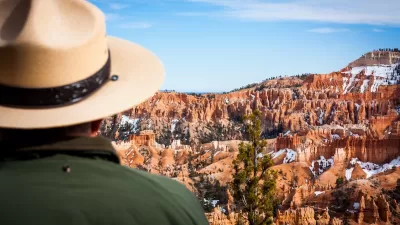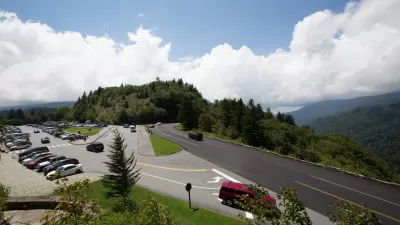Already understaffed and underfunded, the agencies that manage state and national parks are struggling to keep up with the spike in demand for outdoor recreation over the past year.

After a few months of respite from the tourist crowds, America's parks and public lands have seen a resurgence of visitors–and with it, the return of concerns about overcrowding, trash, and other management issues. As Jonathan Thompson writes in High Country News, tourist "numbers surged to record-breaking levels during the latter part of 2020 — a trend that was reflected and then some on the surrounding non-park lands."
Throughout the United States, camping participation grew by 28%, or almost 8 million new campers. At Utah's state parks alone, visitation was up by 1.7 million people. The number of people who entered Yellowstone during Memorial Day weekend saw a 50% jump between 2019 and 2021. "Meanwhile, the agencies charged with overseeing the lands have long been underfunded and understaffed — a situation exacerbated by the global pandemic." To stem the overwhelming numbers of out-of-state visitors, Oregon has raised camping fees for non-residents.
"If nature did manage a little healing in the spring, by summer the wounds were ripped open again in the form of overuse, torn-up alpine tundra, litter, noise, car exhaust and crowd-stressed wildlife," says Thompson. And thanks to the surge in travelers who are new to the outdoors, "[s]earch and rescue teams, most of which are volunteer, were overwhelmed."
As the summer of 2021 wears on, "[t]here is no end in sight: The first five months of 2021 have been the busiest ever for much of the West’s public lands. And tourist season has only just begun."
FULL STORY: Crowds swarm the public lands

Planetizen Federal Action Tracker
A weekly monitor of how Trump’s orders and actions are impacting planners and planning in America.

Restaurant Patios Were a Pandemic Win — Why Were They so Hard to Keep?
Social distancing requirements and changes in travel patterns prompted cities to pilot new uses for street and sidewalk space. Then it got complicated.

Maui's Vacation Rental Debate Turns Ugly
Verbal attacks, misinformation campaigns and fistfights plague a high-stakes debate to convert thousands of vacation rentals into long-term housing.

In California Battle of Housing vs. Environment, Housing Just Won
A new state law significantly limits the power of CEQA, an environmental review law that served as a powerful tool for blocking new development.

Boulder Eliminates Parking Minimums Citywide
Officials estimate the cost of building a single underground parking space at up to $100,000.

Orange County, Florida Adopts Largest US “Sprawl Repair” Code
The ‘Orange Code’ seeks to rectify decades of sprawl-inducing, car-oriented development.
Urban Design for Planners 1: Software Tools
This six-course series explores essential urban design concepts using open source software and equips planners with the tools they need to participate fully in the urban design process.
Planning for Universal Design
Learn the tools for implementing Universal Design in planning regulations.
Heyer Gruel & Associates PA
JM Goldson LLC
Custer County Colorado
City of Camden Redevelopment Agency
City of Astoria
Transportation Research & Education Center (TREC) at Portland State University
Camden Redevelopment Agency
City of Claremont
Municipality of Princeton (NJ)





























